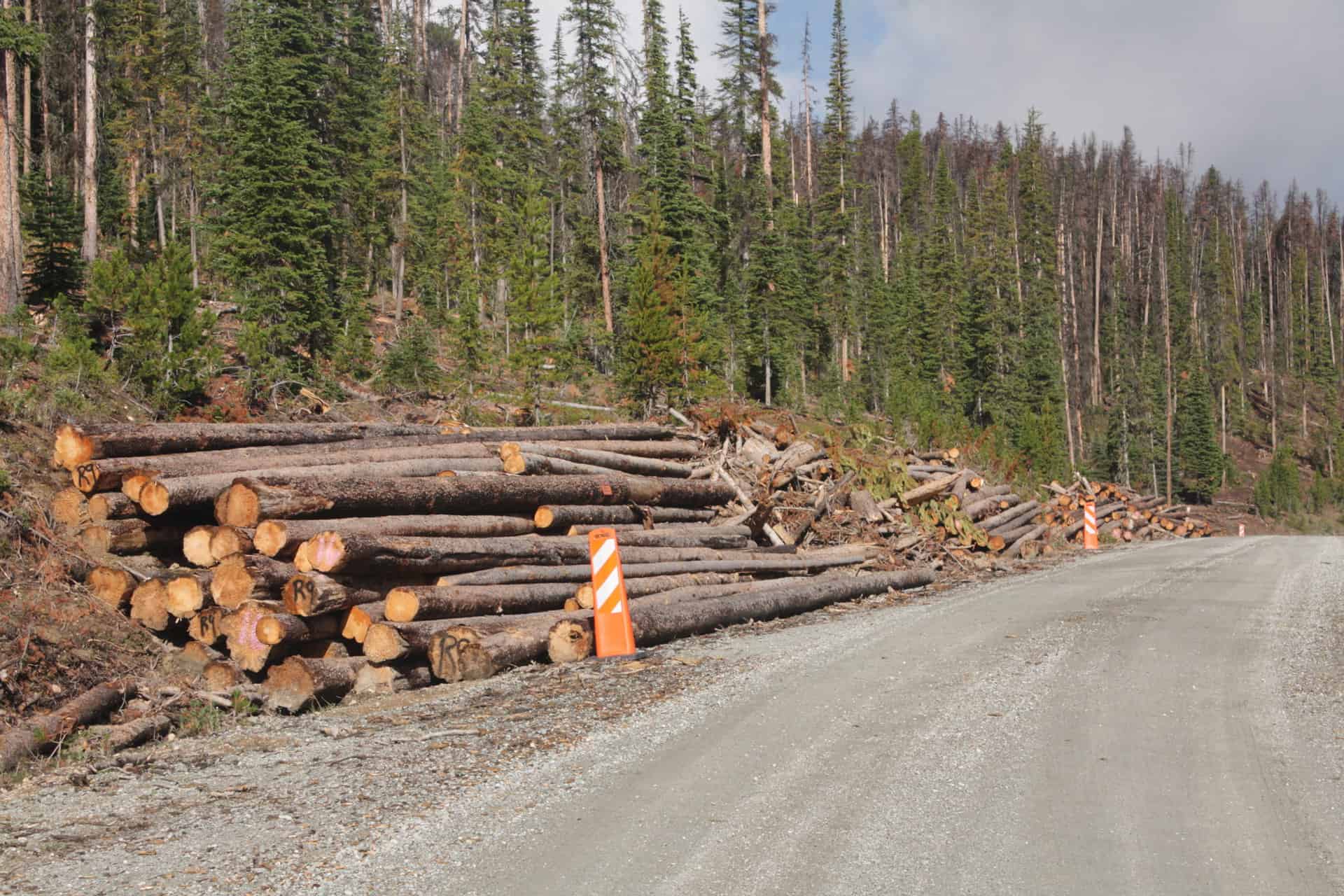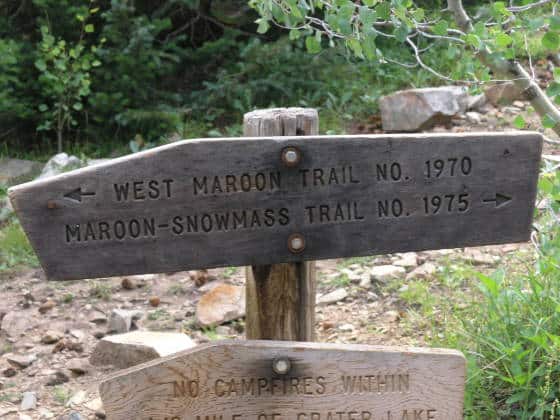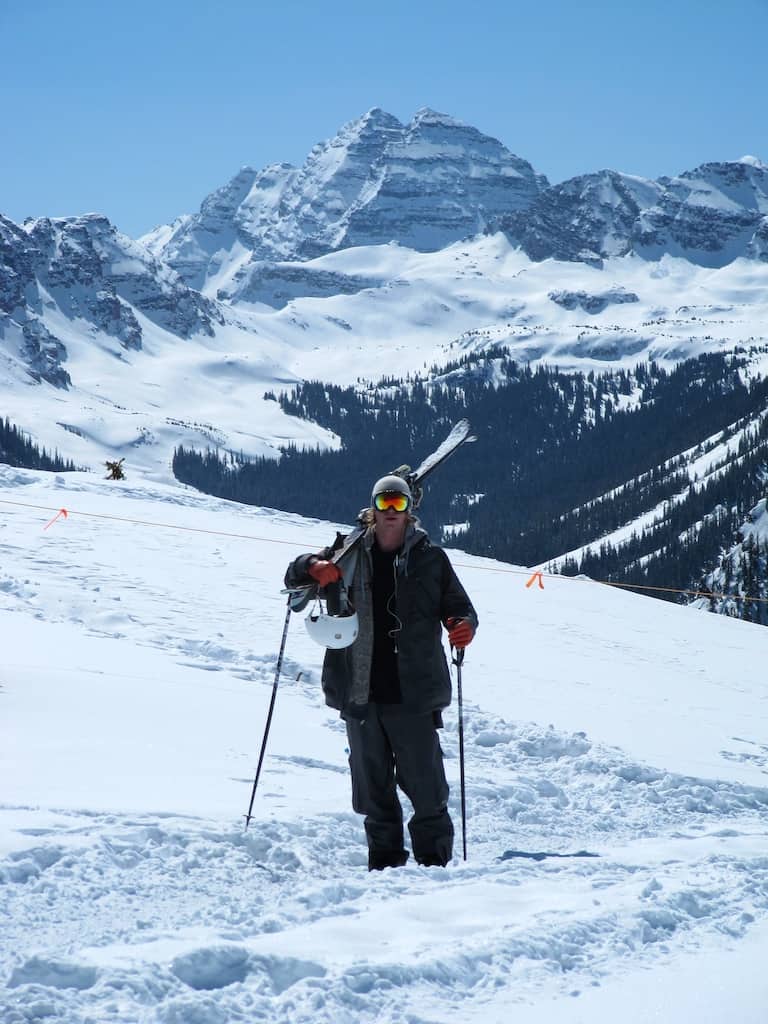All decked out but no place to go: photo of roadside hazard tree removal in bark beetle country.
And then we come to Montana, which still has a timber industry. Even though many environmentalists have stopped litigating, some groups still litigate even “healthy forest” timber sales. Why hasn’t Montana succeeded in ending litigation where the other areas have? The majority of the public in Colorado, Arizona, and Lake Tahoe tend to consider themselves “environmentalists”. The majority in Montana wouldn’t. Could it be that we have a very ironic anomaly where increased logging can only occur where the majority consider themselves to be environmentalists?
Sometimes in order to better understand a hotly debated issue such as logging we get sucked into the details. This has the unfortunate result of losing sight of the “big picture”. We get so lost in the micro, we lose sight of the macro. Big numbers by themselves don’t mean anything, only percentages can lead us to perspective.
Perhaps it would be informative to discuss how much has been logged. The following percentages come from the USFS forest inventory analysis (FIA) reports (can you find the misspelling on this web page?) and the USFS “cut and sold” reports which list harvest acreage for every national forest for every year back to 1945. The following percentages are based on “forested acreage”. No water, rock, or grass acres were used in my calculations.
The following table represents the amount of “forested acres” that were logged in the past 50 years: Lolo…………………………………..17%
Kootenai……………………………..25%
Beaverhead-Deerodge……………5%
Helena………………………………..7%
Flathead…………………………….13%
Gallatin……………………………….7%
Let’s focus on the 5% that was logged on the Beaverhead Deerlodge National Forest since it’s the focus of Tester’s Beaverhead Partnership collaboration. 5% sounds pretty sustainable to me. I mentioned the above numbers to two prominent Montana environmentalists. It was the first they heard of it. I think it would help us all to learn together to start from a joint basis of facts.
The Partnership plan proposes to log 70,000 acres in ten years. Sounds like a lot-until you find out it’s only 2.5% of the “forested acreage”. If you projected that out 50 years, that would mean that 18% would be logged in 100 years. By that time the sapling that grew up in a clearcut done in 1960 would be ready for harvest. If 80% of the landscape for natural processes is not enough, what is?
In the five years ending in 2008, the BDNF logged an average of 500 acres/year. That’s .02% of the forested acreage. At that rate it’ll take 50 years to log 1%! In the last five years the Lolo harvested 2500 acres/year. At that rate it’ll take 50 years to log 7%. A lot of these groups had, in the past, advocated a “zero cut” on national forests. Isn’t 500 acres per year close enough to zero?
On forests that aren’t litigated, the NEPA mandated EA’s get pretty small. I compared one in Montana to one in Colorado. They were both MPB salvage timber sales. The one in Montana treated 1300 acres and ran to 200 pages, the one in Colorado treated 4,000 acres and ran to 57 pages!
Finally, the biggest cause of all should be knowing that environmentalists are good people at heart. They’re not evil. They’re good fathers and husbands. I’ve read the 1985 Lolo forest plan. There’s no doubt they planned to convert 90% of the Lolo to a tree farm by the year 2050. I’ve read USFS inventories from 1950. A third of NW Montana was old growth. There’s no doubt there’s less today. You’ve stopped old growth logging. You’ve set aside roadless. Our life ambition is to be successful at our work. You have been successful.
I also know that the pendulum of public policy in this country swings to the extremes. I’m sure the “zero cut” groups never dreamed they would have stopped all logging so easily. The USFS responded to “changing public values” in the 90’s by scaling back timber harvest. I’m sure they never dreamed it would go too far (I’ve always wanted to ask Jack Ward Thomas where he wanted it to be). Let’s hope the pendulum stops somewhere in the middle.
Note from Sharon. I tried to check Derek’s facts on the internet, but it wasn’t as easy as a person might think without going into corporate databases.
Montana has more litigation and appeals (as described in the GAO study) due to (here are a variety of hypotheses):
Venue shopping by organizations who want to win
The old timber industry built up an associated appeals and litigation industry which is continuing
People only trust that fuels treatments are needed if they aren’t sold to the timber industry.
People in Colorado just want those dead trees outta there and don’t care who takes them.
Other hypotheses?
I also tried to run down all the ongoing litigation of timber and fuels projects in Colorado. I could only find two. One deals with a lawyer/neighbor of the project; the other is a law school class project. So litigation does not seem like a serious problem here.
I also attended a speech by Secretary Vilsack and one by Governor Ritter on Friday in Fort Collins who were both very strongly for using the dead trees that we have everywhere in stacks in bark beetle country. If it is about using wood, as opposed to cutting trees, a biomass industry could start the litigation dynamic all over again. Yet those hazard trees in the photo could be used for various purposes, including to reduce fossil fuel usage. That’s why it would be good to understand the real reasons behind litigation in different areas of the country.
Finally, while trying to check on acreages, I ran across this link to a study that described 8-10 K acres of treatment on the San Juan (this study is entirely very interesting) with the goal of getting up to 20-30 K (only 10% mechanical, most prescribed burning). My colleagues assure me that there are plenty of environmental lawyers in Durango, yet they are not litigated on fuels treatment projects.
Also I see this AP report of a hazard tree removal project along roads on the Helena that is about 10K acres on the Helena over 5-7 years. Will the advent of bark beetle mortality make Montana become more like Colorado in terms of appeals and litigation?
What do you think about the Montana Conundrum? Is your state more like Montana or Colorado?








